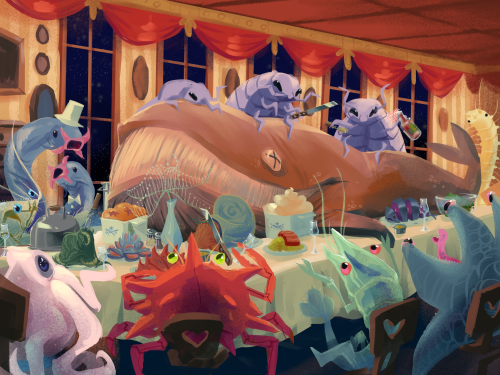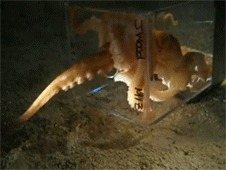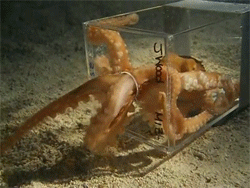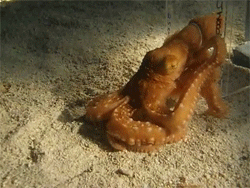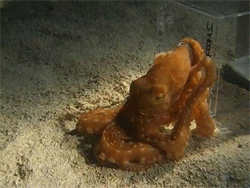Octopus - Blog Posts
Very sad but SOMEBODY ELSE KNOWS THE OCTOPUS STORY. Don't jeopardize your grades or anything but We Need To Know!! Find one of your classmates hopefully one that can repeat a story well and find out. We will be waiting right next to our screens until you get back

“Walrus on your doorstop” this “fairy’s more unrealistic” that my professor just uttered the sentence “there was one day I found a real octopus in my backyard” this man hasn’t left Utah his entire life. How was there an octopus in his backyard in Utah. He then said “I do not have time to elaborate we need to cover a lot today in class” GIRL WHAT DO YOU MEEAN
a lovely octopus, graceful, and strong.
Octopus filmed changing colours while sleeping.
Dolphins beat up octopuses before eating them, and the reason is kind of horrifying
Generally speaking, it’s best if your food doesn’t kill you. This isn’t usually a problem in the animal kingdom, as prey tends to be dead and limp by the time it hits the gullet. But not all creatures are harmless after death: consider the octopus.
Read more



So this is what I’ve been working on over the last couple of weeks, it’s intended to be a sculpture in the environment I’m making for my fmp. Might still tweak the octopus legs and crocodile tail a liiittle more but I’m basically done with the forms. I wanted it to be more obvious that the boobs of the octo character are kind of the ‘eyes’ of the octopus, but... I didnt really manage to make that happen. Once I’ve finished, I’ll upload it on sketchfab.

CTHULHU

Duck’s head octopod (Grimpoteuthis anatoceps)

#penguin #octopus #sausage #fiends #dance #illustration #watercolor #red
Are colour-changing octopuses really colourblind?
Cephalopods, including octopuses and squid, have some of the most incredible colour-changing abilities in nature.
They can almost instantly blend in with their surroundings to evade predators or lay in wait, and put on colourful displays to attract mates or dazzle potential prey.
This is impressive enough on its own, but becomes even more amazing when you discover these creatures are in fact colourblind – they only have one type of light receptor in their eyes, meaning they can only see in black and white.
So how do they know what colours to change to at all?
This has puzzled biologists for decades but a father/son team of scientists from the University of California, Berkeley, and Harvard University think the unusual shape of their pupils holds the key, and they can see colour after all.
Cephalopods have wide U-shaped or dumbbell-shaped pupils, which allow light into the lens from many directions.

When light enters the pupils in human eyes it gets focused on one spot, cutting down on blur from the light being split into its constituent colours.
The scientists believe cephalopod eyes work the opposite way – the wide pupils split the light up and then individual colours can be focused on the retina by changing the depth of the eyeball and moving the pupil around.
The price for this is blurry vision, but it does mean they could make out colours in a unique way to any other animals.
Processing colour this way is more computationally intensive than other types of colour vision and likely requires a lot of brainpower, which might explain in part why cephalopods are the most intelligent invertebrates on Earth.

Read the paper
Images: Roy Caldwell, Klaus Stiefel, Alexander Stubbs

So I sit down to do some sketchercises before working on commissions. Hours later I realize i didn’t follow the “quick” or “many” goal. Ah well. Proud of myself for finally doing a background! FINALLY 🐠 #Octopod #OctoBae #sketch #merfolk #fishfolk #mermaid #octopus #coral #reef #fantasy #pnw #trident #triton #ocean #sketchercise https://www.instagram.com/p/B-YHHitHC5d/?igshid=x5b37xyzpdzn

MY GAHHHD..!! After 3 months without a computer or tablet I’m back in action. I missed my solitude existence so much 😭❤️✨

